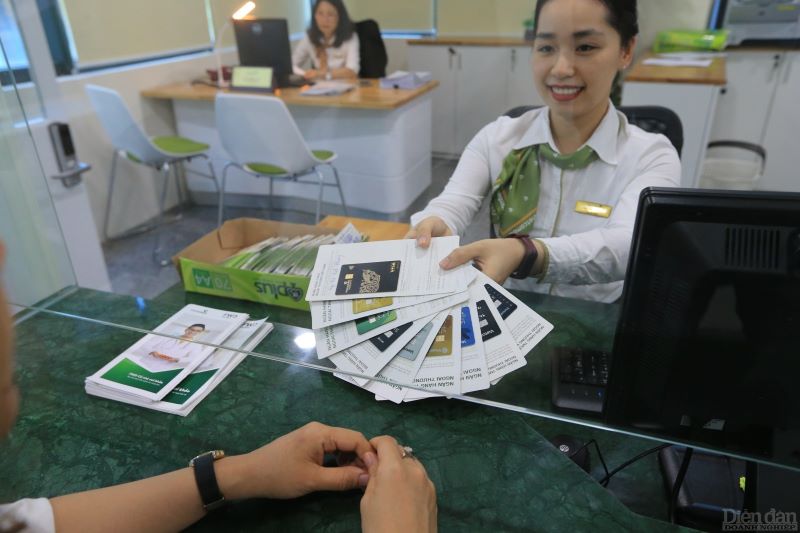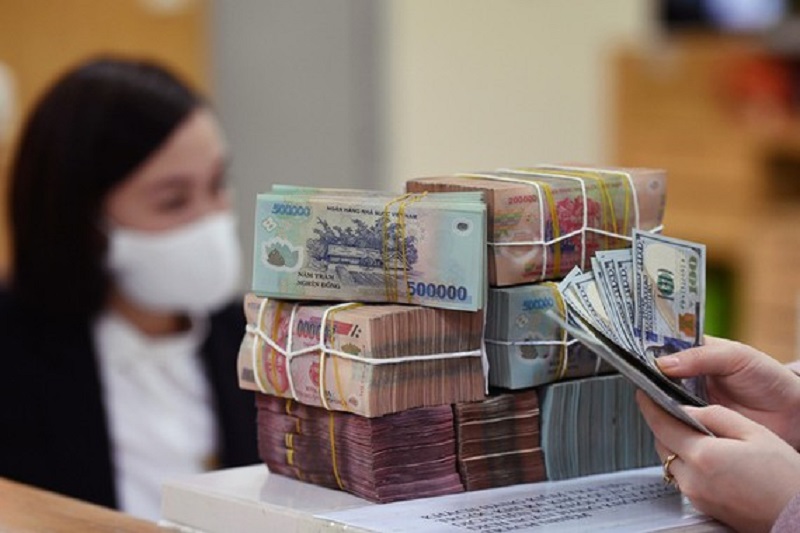Expectation of further policy rate cuts
Financial expert Phan Le Thanh Long anticipates that the State Bank of Vietnam (SBV) would conduct yet another cycle of policy rate cuts between now and the end of 2023 to boost the economy in light of recent challenges.

It is clear that when an interest rate reduction policy is in place, banks always put it into practice right away.
Interest rates have yet to cool down
A number of enterprises have had to cease operations or lower their business scale and output volume, which has had an impact on employment and worker life, according to assessments from functional agencies and experts. The impact of the global economy and political climate on cash movements, commodities flows, and the transportation of goods around the world, with lower exports and challenges in importing, is the primary factor. There are other difficulties in the real estate industry as well. The capital market, including stocks and bonds, is in decline, which has an immediate impact on credit expansion.
At the Conference on Credit Activities and the Implementation of Circular No. 02/2023/TT-NHNN, SBV Deputy Governor Dao Minh Tu said that although interest rates have been adjusted down, there are still banks with abnormally high average lending rates. The Deputy Governor named some banks with high lending rates and believed that SBV branches in localities will rectify this situation, because when businesses are facing difficulties, banks must share their burdens to maintain a long-term symbiotic relationship. Therefore, Deputy Governor Dao Minh Tu suggested that commercial banks and SBV branch leaders propose solutions for Circular No. 02 to be implemented immediately, without causing complaints from businesses.
According to financial expert Phan Le Thanh Long, in response to the concern voiced by the State Bank of Vietnam's deputy governor, some banks have claimed that their high interest rates are due to the nature of their consumer lending, which involves greater risks. Other banks must continue to charge rates between 13 and 14 percent annually because their clients have long-term projects and take significant risks.
It is clear that when an interest rate reduction policy is in place, banks always put it into practice right away. However, the output interest rate continues to depend on the terms of credit agreements, the particular risks associated with projects, and the borrowing needs of customers. Another problem is that if high loan interest rates are maintained, banks will be able to increase short-term profits at least temporarily. As a result, banks need some time to adjust their lending rates to reflect the lower deposit rates.
"Another point is that most banks offering high lending rates are small and medium-sized commercial joint-stock banks, while state-owned commercial joint-stock banks have made significant changes. The customer characteristics of large-scale banks are easier to change due to their stability and different risks, and they also have financial strength and accumulated profits to make changes," explained Mr. Long.
Banks need to balance the profit equation
Mr. Phan Le Thanh Long asserts that it is very challenging for people or businesses to borrow money in the context of high lending interest rates and challenging business, which is also the main reason for bad debts. Banks are permitted to reschedule loans under Circular 02 from the State Bank of Vietnam until June 30, 2024. When debts are restructured, they stay in the same debt group.
Therefore, a significant factor in forcing banks to restructure debt for many customers is the lending interest rate. That, however, has two sides to it. The problem is that while input costs are low, banks must strike a balance between the quick profits realized and the risk that customers with lots of bad debts will compel the bank to handle the principle and restructure the loan if lending interest rates are high.
From now until the end of 2023, we still expect another round of interest rate reductions to support the economy. Because monetary policy is seen as a very important policy in the current context.
Banks need some time to adjust their lending rates to reflect the lower deposit rates.
Currently, a series of easing policies have been implemented, such as: First, with fiscal policies that increase public spending, increase government spending, and reduce taxes. Second, a series of monetary policies have just been implemented such as Circular 02 and Circular 03 of the State Bank of Vietnam. That helps the market breathe easier, but to achieve the big goals, we still have to wait and see how the world economy declines, whether businesses have orders or not, especially exporting enterprises when Vietnam has been a net exporting country since 2015.
There is speculation that the US Federal Reserve (Fed) may raise interest rates again in May. If the Fed does so, how will this change Vietnam's policy? In response to this query, Mr. Long stated that the level of US influence on Vietnam is today lower than it was in 2022 because the Fed raises interest rates to combat inflation, which slows the economic cycle and lowers consumer spending.
We also acknowledge that it is highly likely that the Fed will increase interest rates in May because they have clearly communicated that the inflation rate in the US remains high, ranging from 4.5 to 5%. In Vietnam, people are tightening their spending habits and legislative frameworks differ from the world, so whether or not the Fed raises interest rates will not have an immediate impact on us. The biggest impact will be on the psychology of investors. However, this psychology will pass quickly and will not have a significant impact on the market," said the expert.








